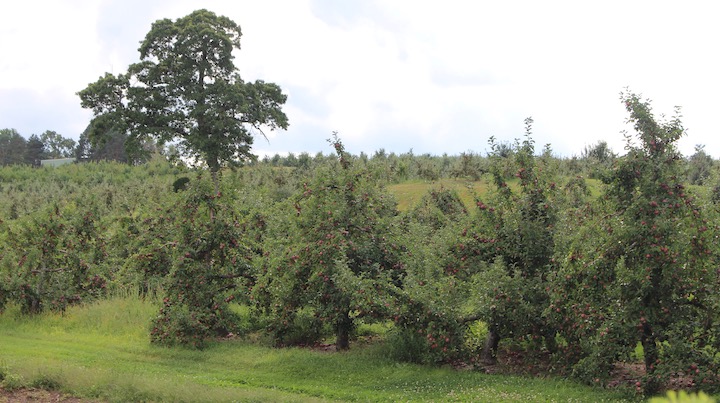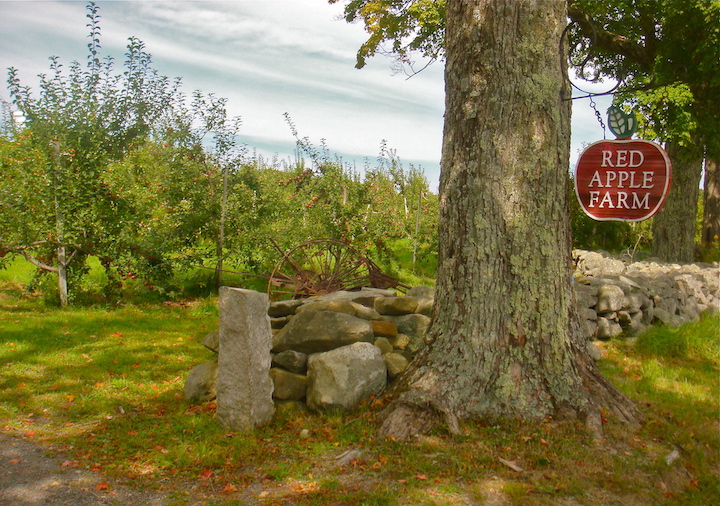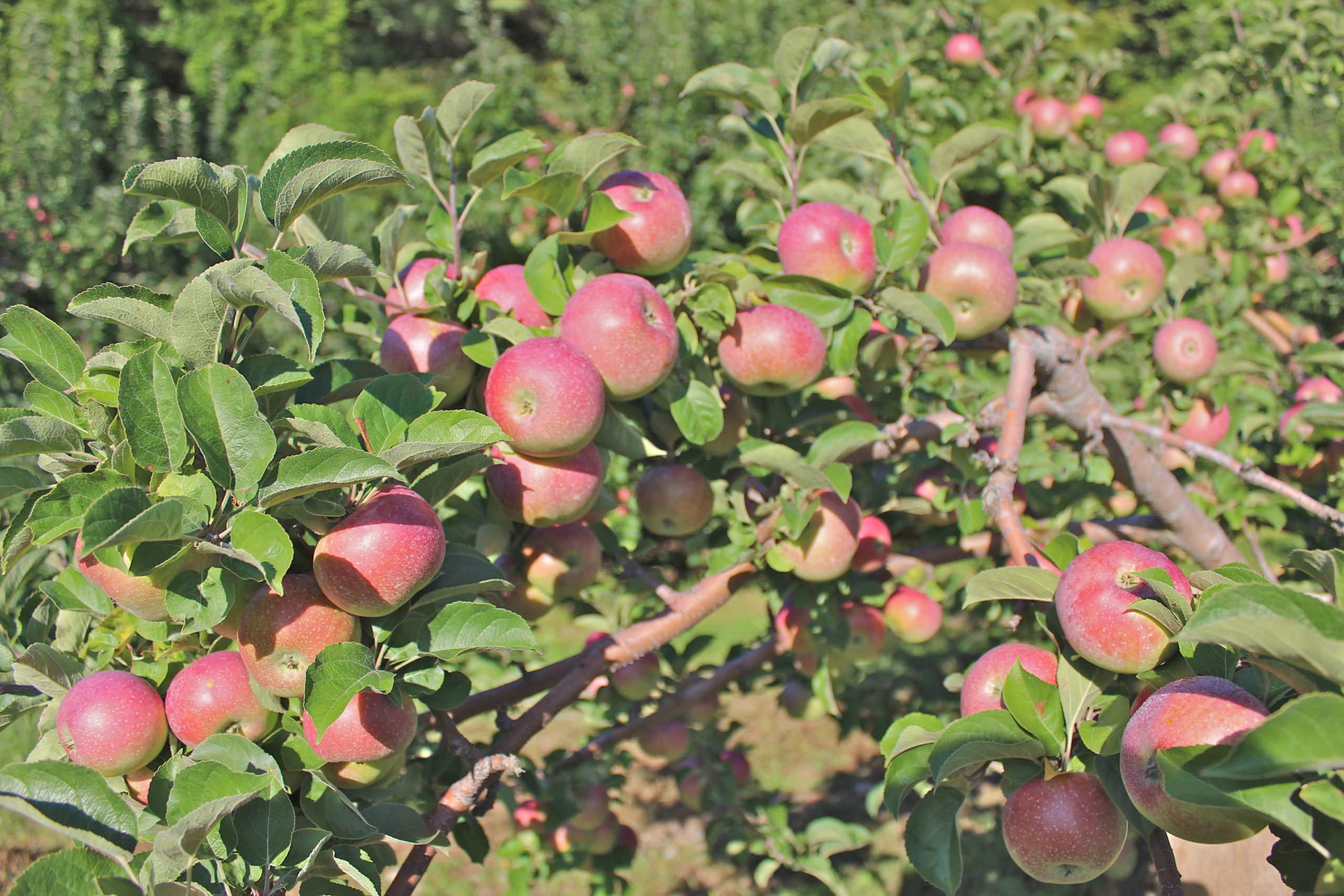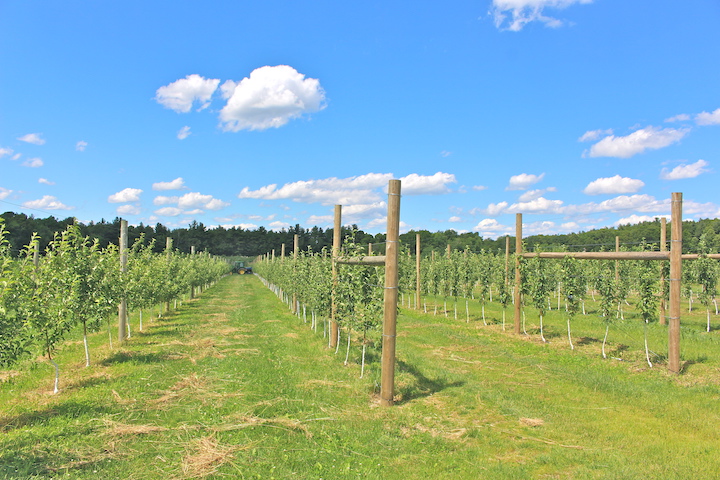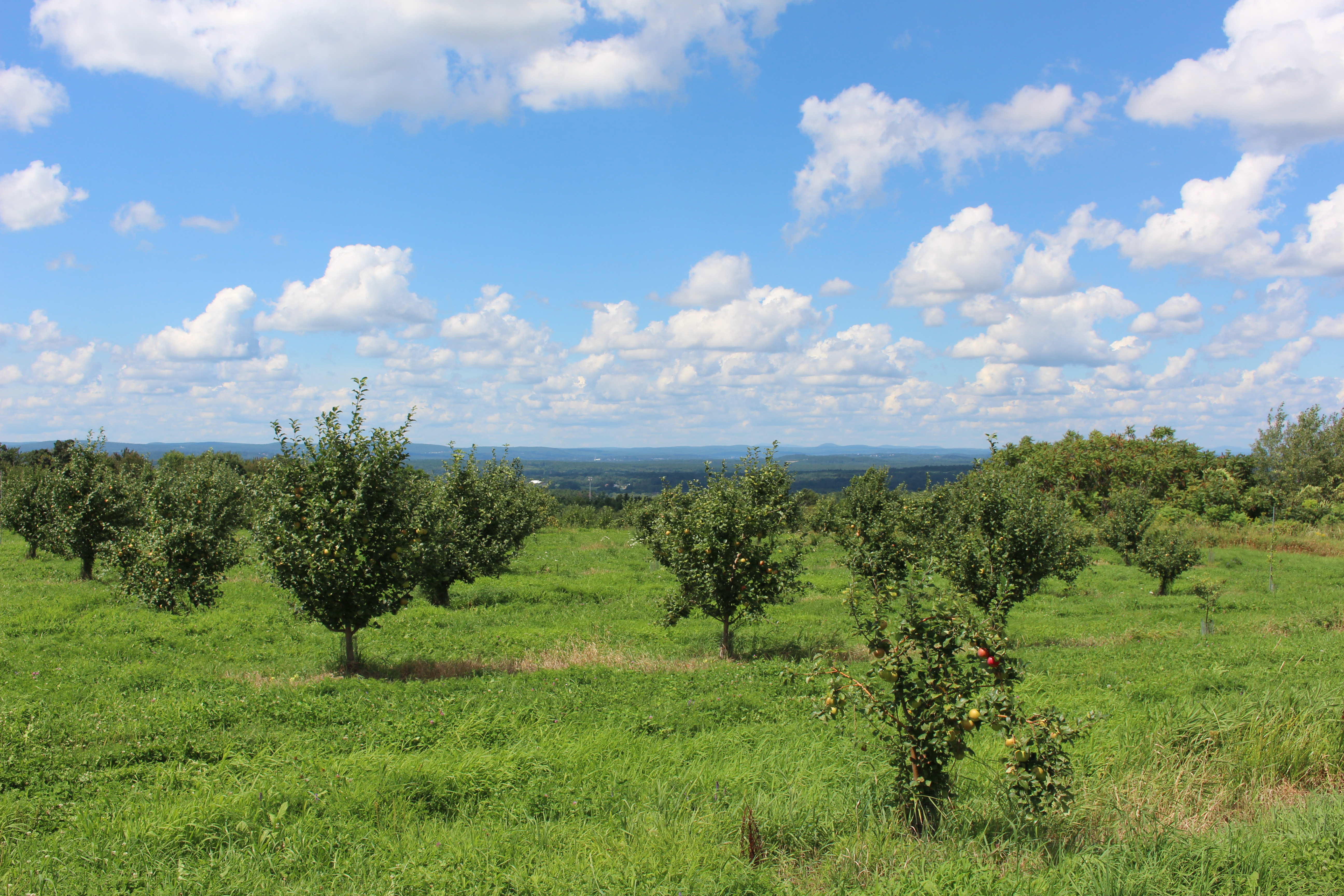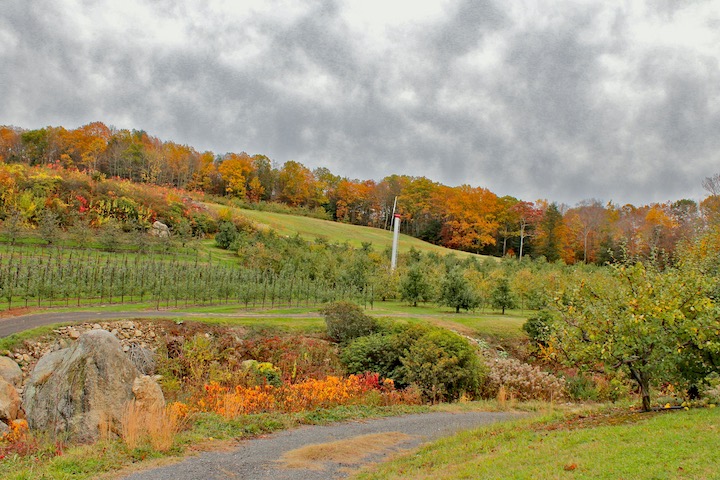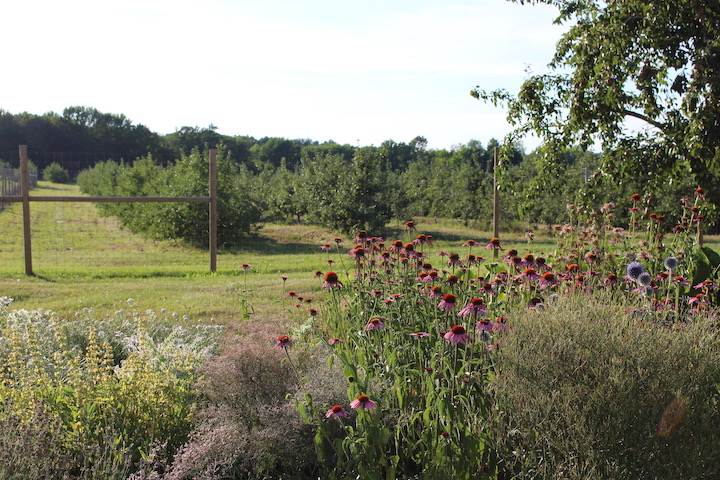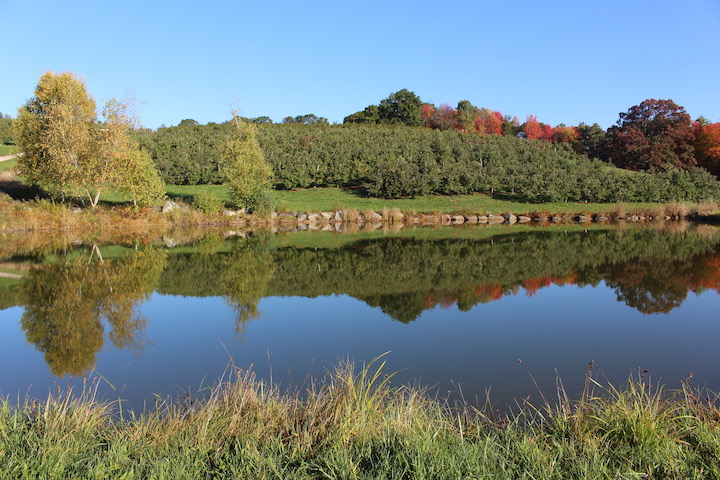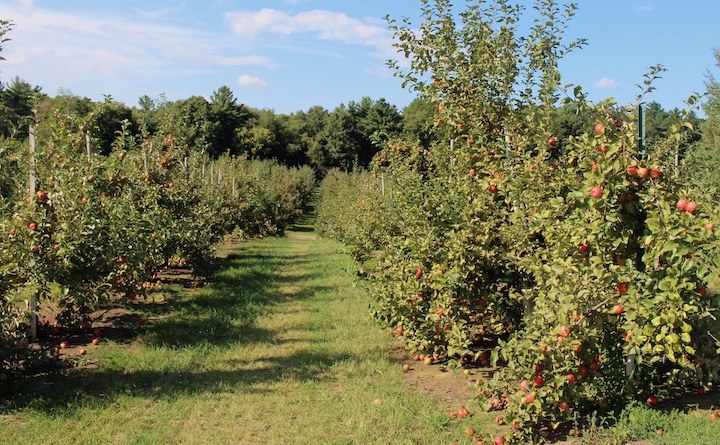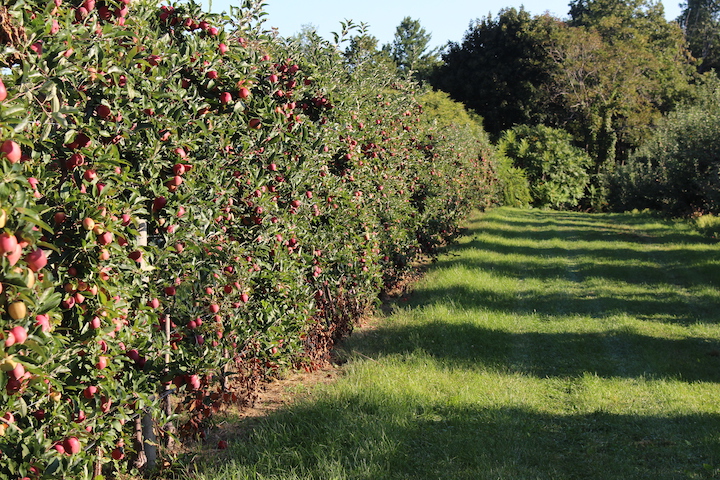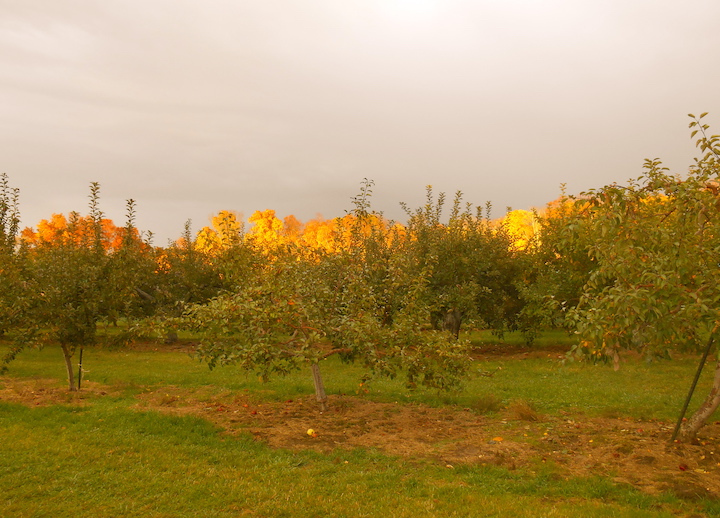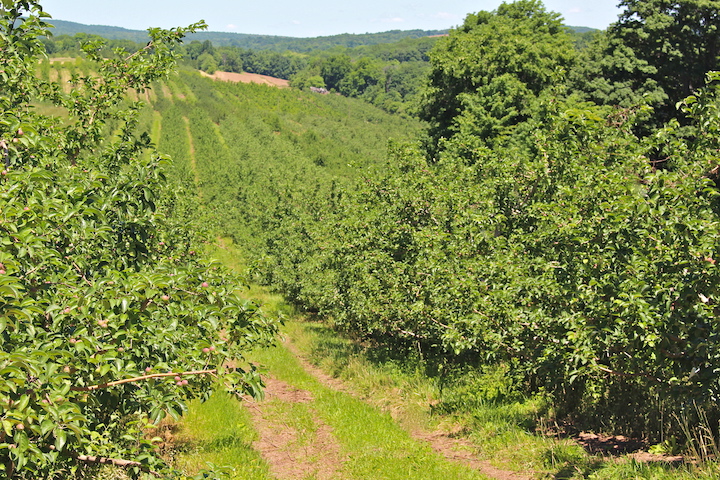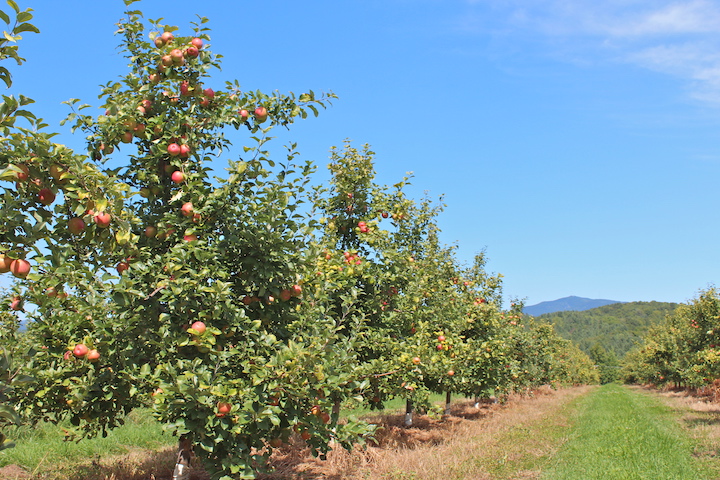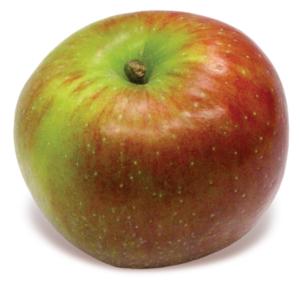
Description
Baldwin is one of the best New England apples, and one of the oldest. It is large and conical, with crimson red over a coppery green skin. Its cream-white flesh is crisp and juicy. It is aromatic with a spicy, sweet-tart flavor, and it holds its shape when cooked. An outstanding apple for fresh eating, it is also good baked, especially in pies. Baldwins store well. Baldwin excels as a fresh eating and cooking apple, and in cider. Baldwin is ready for picking in October through November.
Discovered: 1740, Massachusetts
Parentage: Unknown
Harvest: Late Season
History
Although its parents are a mystery, Baldwin has a well-documented history. It was first named Woodpecker because the tree was popular with those birds. Its cultivation passed from John Ball, owner of the original orchard in Wilmington; to William Butters, who later purchased the land; and finally Colonel Loammi Baldwin, who gave the apple its permanent name.
While Colonel Baldwin (1744-1807) is best known for the apple, he was a man of many accomplishments: a Revolutionary War veteran who crossed the Delaware with Washington and commanded the Woburn Regiment during the Battle of Concord and Lexington; a fellow of the American Academy of Arts and Sciences; an elected member of the Massachusetts General Assembly; high sheriff of Middlesex County; and he is known as the Father of American Civil Engineering.
His engineering feats include the nine-year construction of the Middlesex Canal beginning in 1794, which connected the Merrimack River to Boston Harbor. While working on the project, Baldwin visited the Butters farm and obtained scion wood from the original Woodpecker tree. From these he planted a row of trees near his home in Woburn and gave scions to friends.
Adding to his legacy as a man of apples, Baldwin was a second cousin to John Chapman (“Johnny Appleseed”).
Introduced commercially around 1784, by 1850 Baldwin was the Northeast’s most popular apple, more widely grown in the United States than any other variety. It remained so for more than 50 years. Its popularity began to wane in the early 1900s.
Baldwin’s availability took a precipitous decline following a devastating freeze during the winter of 1934 that wiped out more than half its numbers, but in recent years it has been making a modest comeback.
